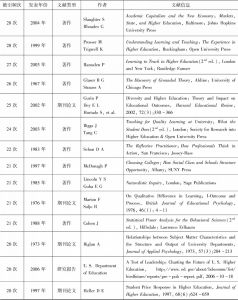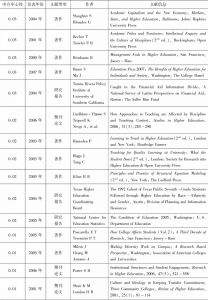论文
西方高等教育研究的知识基础
摘要
学术论文不仅展现了科学发展的历史脉络,也是学者之间实现学术思想碰撞与知识继承的重要途径。知识基础对于高等教育研究而言具有极其重要的学术意义,是构筑学术基础、联结科研脉络的核心体现。本研究通过知识网络分析,聚焦西方高等教育研究领域知识基础的积累及演化情况,不仅为分析西方高等教育研究的整体研究结构、知识构成与学术脉络提供了实证依据,也为我国高等教育研究的发展提供了相应反思。
检索正文关键字
论文目录
- 一 问题提出
-
二 研究设计
- (一)研究方法
- (二)研究对象
- (三)研究数据
-
三 数据分析
- (一)被引频次
- (二)内容分析
- (三)聚类分析
- (四)时间演化
-
四 研究结论与启示
- (一)研究结论
- (二)研究启示
相关文献
查看更多>>>










